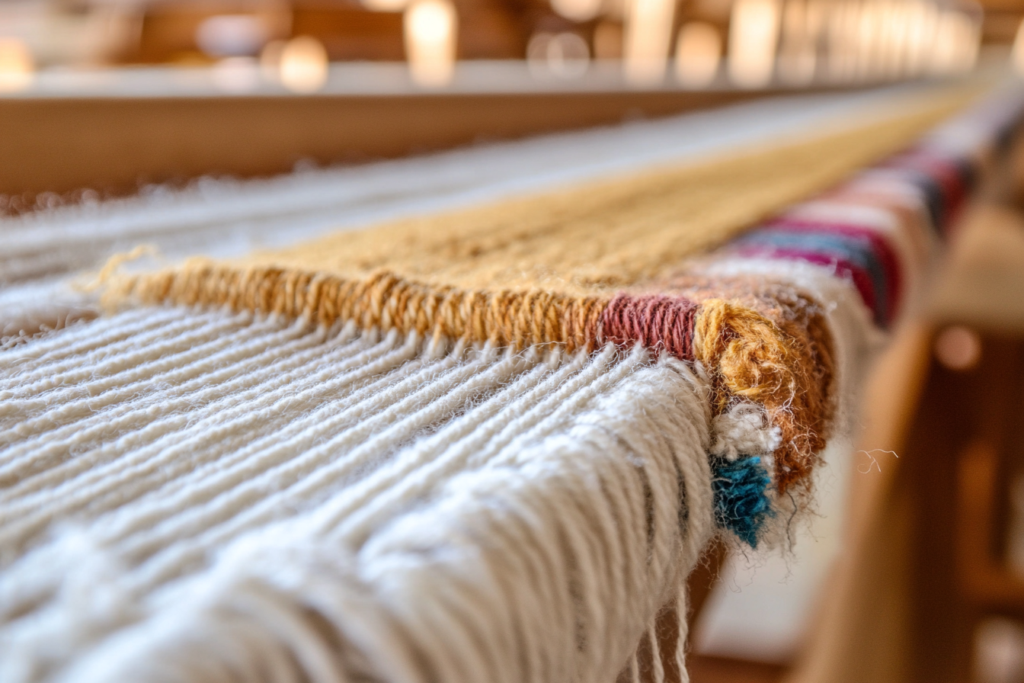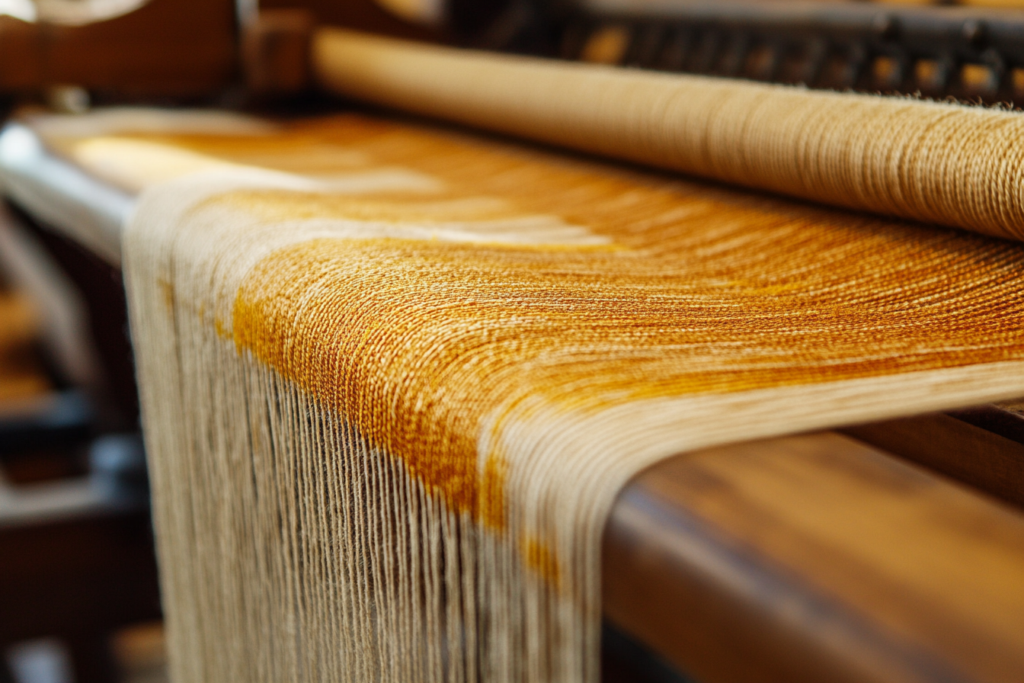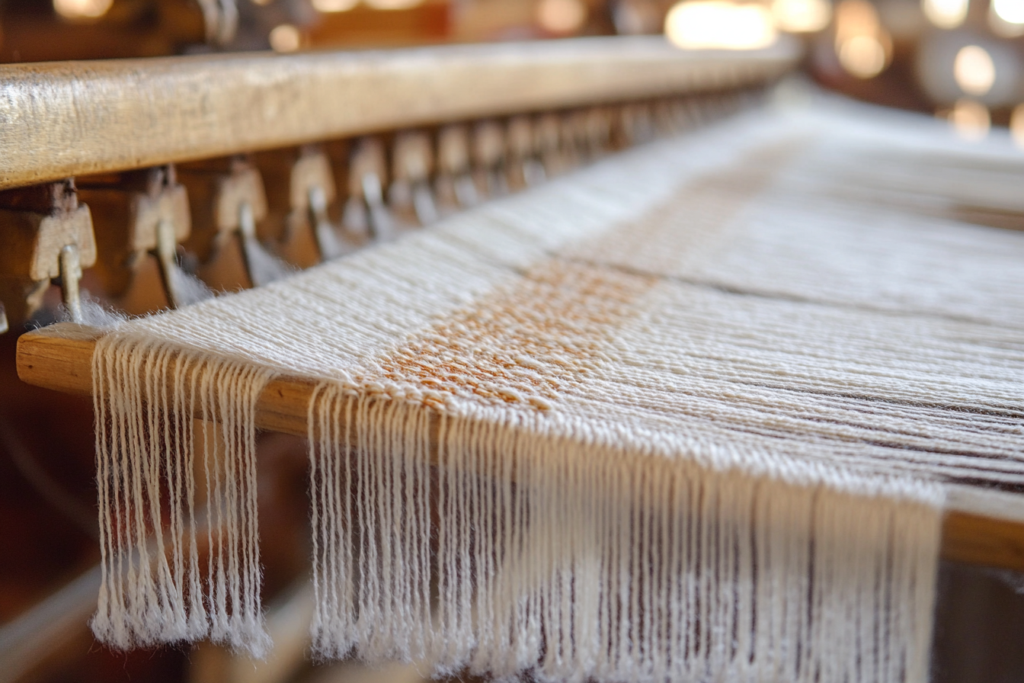Lengthwise Grain: The Warp Yarn Foundation in Woven Fabrics
Meta Description: The lengthwise grain, also known as warp yarn, is the fixed set of yarns on a loom before weaving. Learn how it affects fabric strength, drape, and garment construction.
What is Lengthwise Grain in Fabric?
Lengthwise grain refers to the warp yarns that run parallel to the fabric’s selvage and are fixed on the loom before weaving. These stronger, more stable yarns provide the foundation for woven textiles, influencing how the fabric drapes, stretches, and is used in garment construction.
Since warp yarns are held under tension during weaving, they are typically tighter and less stretchy than crosswise grain (weft yarns), making them critical for fabric durability and structure.


Key Features of Lengthwise Grain (Warp Yarns)
✔ Runs Parallel to the Selvage – The fabric’s longest and strongest grainline.
✔ Fixed on the Loom Before Weaving – Forms the foundation of the woven textile.
✔ Stronger & Less Stretchy Than Weft Yarns – Provides stability and durability.
✔ Influences Fabric Drape & Strength – Affects how the fabric hangs and behaves.
✔ Essential for Proper Garment Cutting – Patterns are aligned with the warp grain for structure.
Lengthwise Grain vs. Crosswise Grain vs. Bias Grain
| Feature | Lengthwise Grain (Warp) | Crosswise Grain (Weft) | Bias Grain |
|---|---|---|---|
| Direction | Runs parallel to the selvage | Runs perpendicular to the selvage | 45° diagonal to the selvage |
| Stretchability | Least stretch | More stretch than warp | Maximum stretch |
| Strength & Durability | Strongest grain | Slightly weaker than warp | Flexible but less stable |
| Common Use in Sewing | Cut along warp for structured garments | Used for width flexibility | Bias-cut designs for draping effects |
💡 Tip: Fabric should be cut along the lengthwise grain for structured garments like suits and jackets, while bias grain is used for fluid, draped designs.
Where is Lengthwise Grain Important in Fashion?
📌 Tailoring & Suiting – Structured garments like blazers and trousers rely on the stability of warp yarns.
📌 Dresses & Formalwear – Ensures proper drape and shape retention.
📌 Denim & Heavy Fabrics – The lengthwise grain provides extra durability in jeans and workwear.
📌 Home Textiles & Upholstery – Warp yarns contribute to fabric strength and longevity.
📌 Pattern Making & Cutting – Most garment patterns align with the warp grain for better fit and structure.
Why Cutting Along the Lengthwise Grain Matters
✔ Enhances Garment Stability → Prevents unwanted twisting or stretching.
✔ Improves Durability & Longevity → Warp yarns withstand tension and wear better.
✔ Creates a Professional Fit → Ensures clothing maintains its intended shape.
✔ Aligns with Fabric Drape → Allows structured and smooth garment flow.
Common Fabrics with Strong Lengthwise Grains
✔ Denim & Twill Fabrics → Warp yarns create diagonal ridges for durability.
✔ Linen & Cotton Fabrics → Strong, breathable warp yarns improve stability.
✔ Silk & Satin Weaves → Warp yarns control sheen and luxurious drape.
✔ Taffeta & Brocade → Warp-based structures enhance crispness and texture.
Conclusion: The Importance of Lengthwise Grain in Fabric Construction
The lengthwise grain (warp yarns) is the foundation of woven fabrics, providing strength, structure, and stability. Whether in tailoring, dressmaking, or upholstery, understanding warp grain behavior is essential for cutting, designing, and constructing high-quality garments.
By aligning fabric patterns along the warp grain, designers and manufacturers ensure long-lasting, well-structured clothing with professional-quality finishes.



